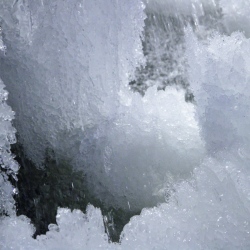
Europa, one of Jupiter’s moons, might just look like a great big ball of rock and ice. But to NASA, this moon represents much more. It could contain the life scientists have long been searching for. Through the Europa Mission, NASA plans to send a lander to Jupiter’s moon, which is believed to hold a vast ocean beneath it’s frozen crust.
The project is due to launch in either 2024 or 2025, when the lander would begin searching for lifeforms on the moon’s surface. If organisms are found, plans would develop for a more sophisticated craft to be sent to Europa in search of its underground ocean. Dr. Kevin Hand, one of NASA’s leading officials with the Europa Mission, explains the program’s investment towards these advancements:
For the first time in human history, we can actually build missions and design the instruments that could go out and answer this fundamental question of whether or not biology works beyond Earth. If we commit to getting these missions done, we could potentially find life in our own solar system’s backyard within the next 20 years. Technologically it is entirely possible, but it requires public support, excitement about this, so we look to you to help communicate and spread the word.
In order to prevent bacteria from hitching a ride to Europa, the lander would be fitted with a special device to protect from any contaminants. Bacteria would affect test results and could even damage indigenous lifeforms if they are found to exist. As Dr. John Rummel from the Seti Institute in California says, we should “protect Europa for the Europans…not the Europeans.”
Bacteria could survive the journey to Europa, only if they were protected from the Sun’s ultraviolet radiation. Once they reach the icy moon, most would die off within a few days. But if they were shielded within the spacecraft, they’d have a better chance of surviving. The reverse is also a concern, as extra-terrestrial life could be brought back to Earth, further contaminating the process.
But Dr. Rummel is confident that none of this will happen, and that scientists will be able to contain samples until hazard testing gets underway. With the necessary precautions taken, we might be able to retrieve massive amounts of data that will take us one giant step closer to understanding where life exists in our vast universe.
